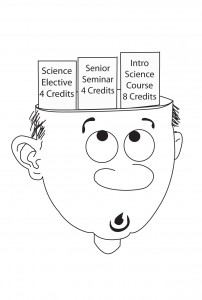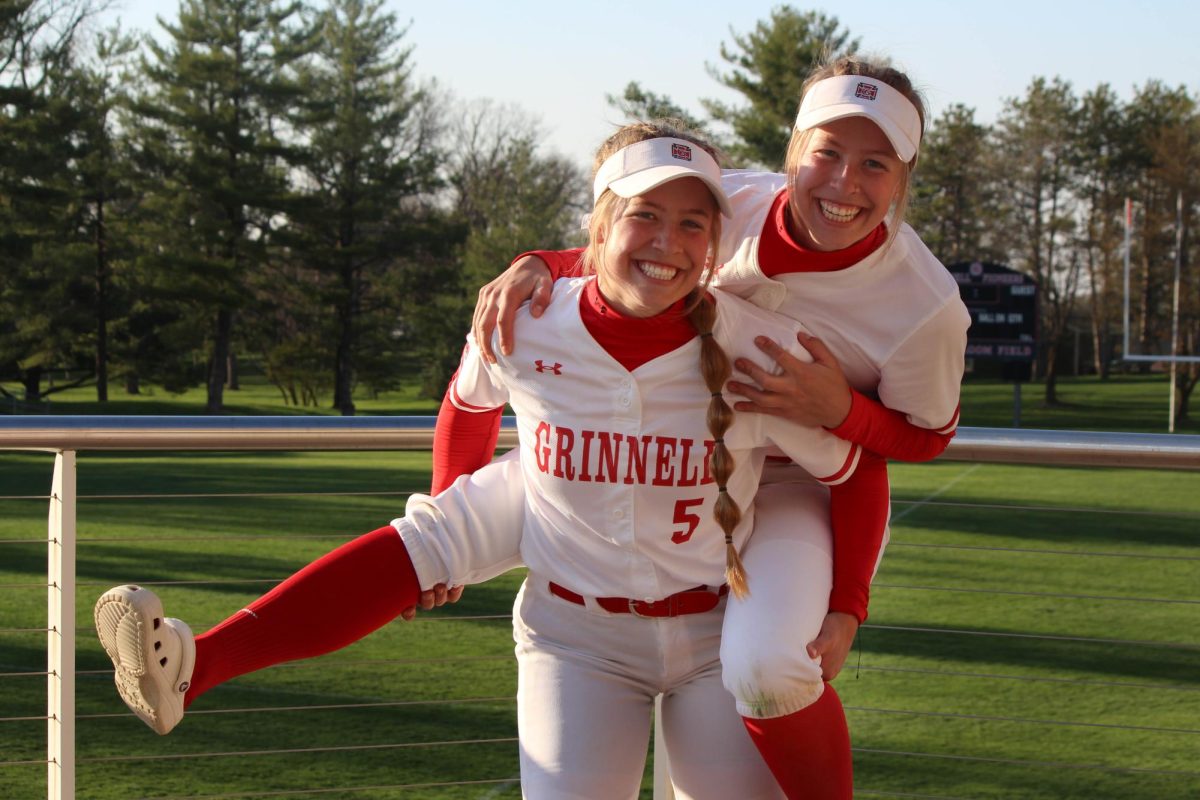With 33 current students, the neuroscience concentration is one of the most popular concentrations at Grinnell. Neuroscience is an interdisciplinary field, and according to its description on the College’s website, the concentration “Provides students a unique opportunity to integrate diverse approaches and principles from across the natural sciences and beyond the natural sciences to address complex questions about the function of the nervous system.” Students can take a wide variety of courses to fulfill its requirements, ranging from Mathematical Modeling to Ceramics.
The proposal for the concentration originally arose in February 2006, by Professors Rafael Cabeza, Biology, Mark Levandoski, Chemistry, Clark Lindgren, Biology and Nancy Rempel-Clower, Psychology. However, despite being the most populous concentration and approaching 10 years of existence at Grinnell, neuroscience isn’t a major.
Zev Braun ’15 is a biology major, neuroscience concentrator, and was initially interested in ecology and evolution when he came to Grinnell. However, his first biology class changed that.
“The reason I chose neuroscience with [biology] is [because of] my first year, first semester intro to bio class with [Professor] Clark Lindgren, and that was amazing,” Braun said. “He did a really good job of throwing us into the specific biological system and having us explore it in-depth even though we were only first-years. He gave us a lot of autonomy in the class to design what we wanted and gave us expensive equipment to work with.”
Similarly, Tague Zachary ’15 is a biological chemistry major, neuroscience concentrator, and also chose the concentration because of the same introduction to biology class on neurobiology that Braun took. “We were designing real experiments with equipment that was way beyond what I thought I’d be doing in college in my first year,” he recalled.
Braun is also on the neuroscience Student Educational Policy Committee (SEPC) and holds study breaks for students interested in the concentration. Most of the people who attend are first- and second-years, so he conducts games and experiments to make it more interesting.
“One of the most popular ones is called the phantom hand, which is like a hypnosis thing where you start to believe that a fake hand is your real one,” he said.
However, the growing popularity is not enough for neuroscience to become a major. “Part of [the lack of a neuroscience major] might be due to the relative immaturity of the concentration at Grinnell,” said neuroscience concentration chair Professor Jerod Weinman, computer science.
He also said that one of the main reasons is because of its interdisciplinary nature.
“It’s difficult to put together an entire major that represents the field in the sufficient depth that we often associate with a major,” Weinman explained. “It’s such an interdisciplinary field [that] one would have to take so many courses from so many different disciplines. We have to ask [whether] we could put together a program within the typical 32 credits that is really compelling as a major, and could we get enough depth in this thing we call neuroscience.”
 Braun agrees with that reason and doesn’t believe neuroscience needs to become a major.
Braun agrees with that reason and doesn’t believe neuroscience needs to become a major.
“I think one aspect Grinnell embodies to this day is to produce scientists that have diverse levels of expertise and interests,” he said. “Grinnell’s not about specializing in one area and pursuing it on a narrow path. Making another major, especially in neuroscience, will limit this broad scope of information that Grinnellians absorb.”
There doesn’t seem to be a demand for neuroscience becoming a major among other students either.
“Nobody I know of has broached the idea before to me,” Weinman said. “I haven’t heard lots of clamoring from students for it to be a major.”
As for the course load, for your average science student, it is quite reasonable to add the concentration.
“[The work] for the concentration is not that bad,” Zachary said. Braun agreed, “I think I like science so much that I don’t think any part of it is hard. You [also] have a lot of leeway on what courses you can take.”
Weinman expressed a similar opinion on the flexibility of the concentration.
“Even though it’s a concentration, there are many different facets in the field of neuroscience,” he said. “And because of the flexibility of the requirements at Grinnell, a student can really make their coursework match with their interests in neuroscience.”
In lieu of the 10-year anniversary of the concentration, the faculty affiliated with the concentration are planning to do a review of it.
“We’ll probably see whether it offers what we want to offer students,” Weinman said. “It’s basically a chance for us to assess and reflect on our goals and how we’re meeting them.”
And about neuroscience becoming a major? “There’s clear precedent for it to become a major,” Weinman said. “One has to evaluate the demand, and the sensibility of the program to become a major, but we haven’t asked those questions yet.”





























































